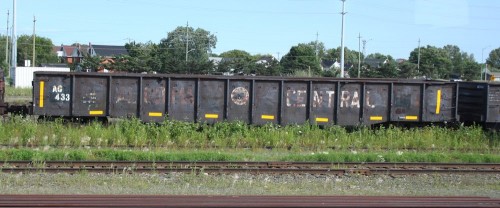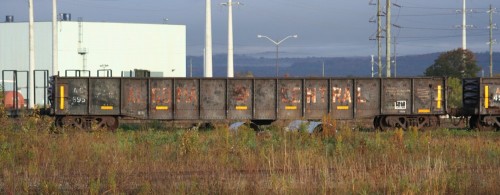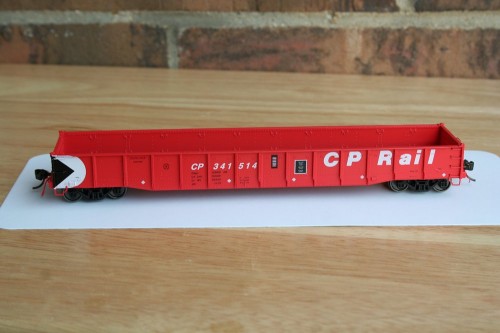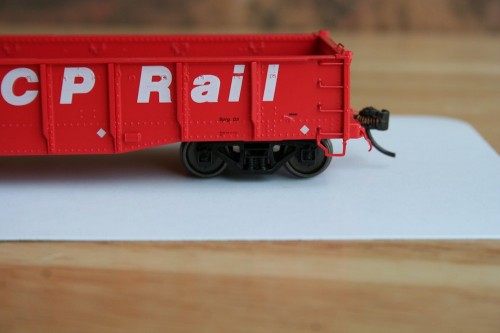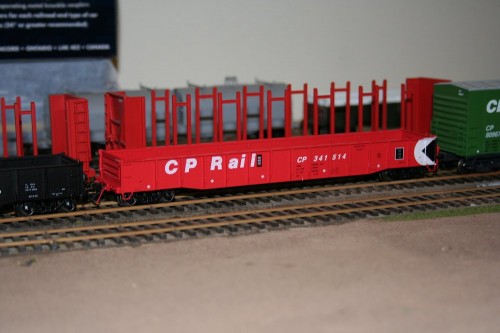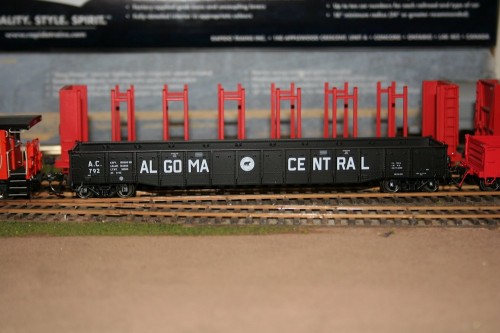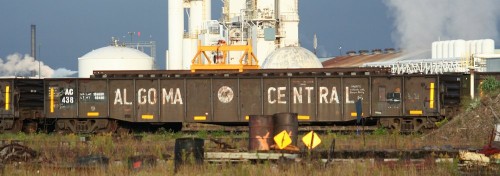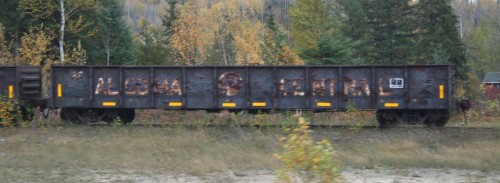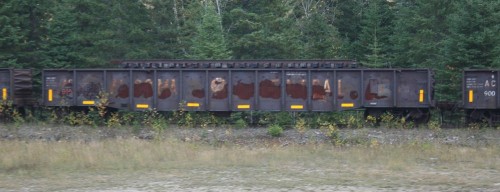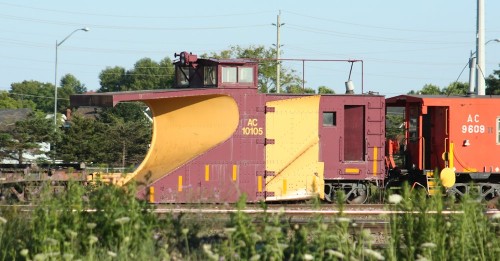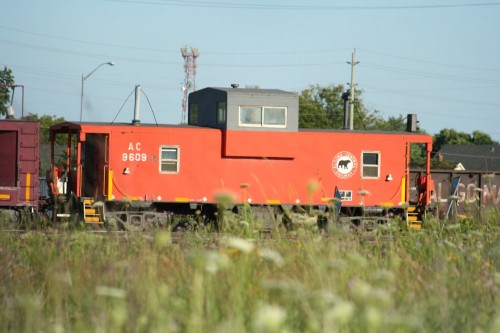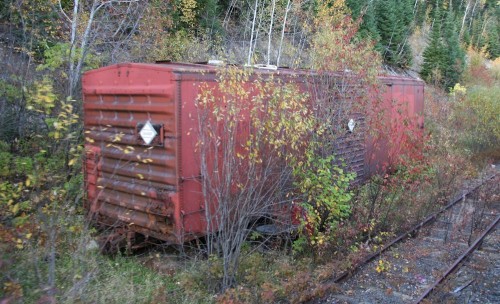Tonight’s project is working on lettering on a few cars. Since I acquired “more than one” 6-packs of Algoma Central gondolas when Rapido Trains released their new Canadian gondola in AC colours, I have a number of cars with duplicate numbers to change. Also, some later repaints had a simplified version of the bear logo without the railway’s name spelled out in an encircling band around the logo. I have several sets of CDS dry transfers for AC gondolas in my lettering stash, and these sets include both versions of the logo, so I decided that on at least a few cars I will also replace these logos for some visual variety.
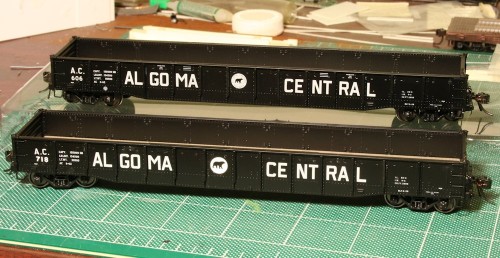
Two Rapido ACR gondolas. Top car is unaltered factory paint/lettering; bottom car is renumbered and has a different logo applied, although differences are more obvious in close up or in person.
To remove the original lettering, I used the edge of a curved scalpel type blade. If you work very carefully, and with a light touch, you can scrape away the original lettering with little trace remaining. The new number and logo will also cover over the same spots, and a little bit of light weathering will completely hide any uneven spots.
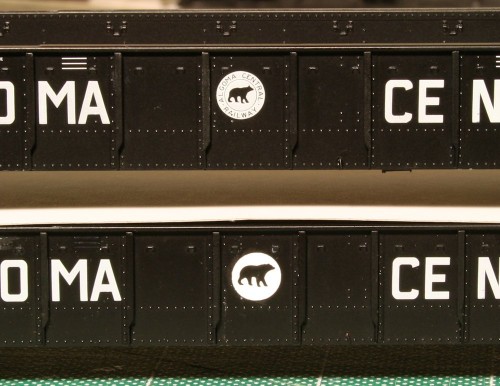
Logo comparison. Above is unaltered factory painted car. Below, the original logo has been carefully removed and replaced with the simplied logo from a CDS dry transfer set.
In the close-up photo you can more clearly see the difference between the logos. The top logo, as featured on the factory-painted Rapido model, includes an outer band around the logo with the railway’s name. The lower logo, applied from a CDS dry transfer lettering set, is a simplified version without the railway name and a proportionally larger bear silhouette.
I also removed the NSC builder’s logo (below the car data) and the fill lines (above the “GO MA” and “NT RA” panels) from the lower car, and I’ll probably actually be going over all of the cars I have and removing the builder’s logo from all of them. (Information suggests that when brand new/as built the original series of cars acquired in 1958 (AC 601-800) were originally painted *brown*, although photos of these cars in original paint are extremely hard to come by. AC 801-875, built in 1961-62 were probably delivered in black, as were coil steel service cars in series AC 900-924, built in 12/1962 and for which I have photos that clearly show the original NSC builders logo. The 900-series also had a slight variation in the font of the billboard lettering…)

